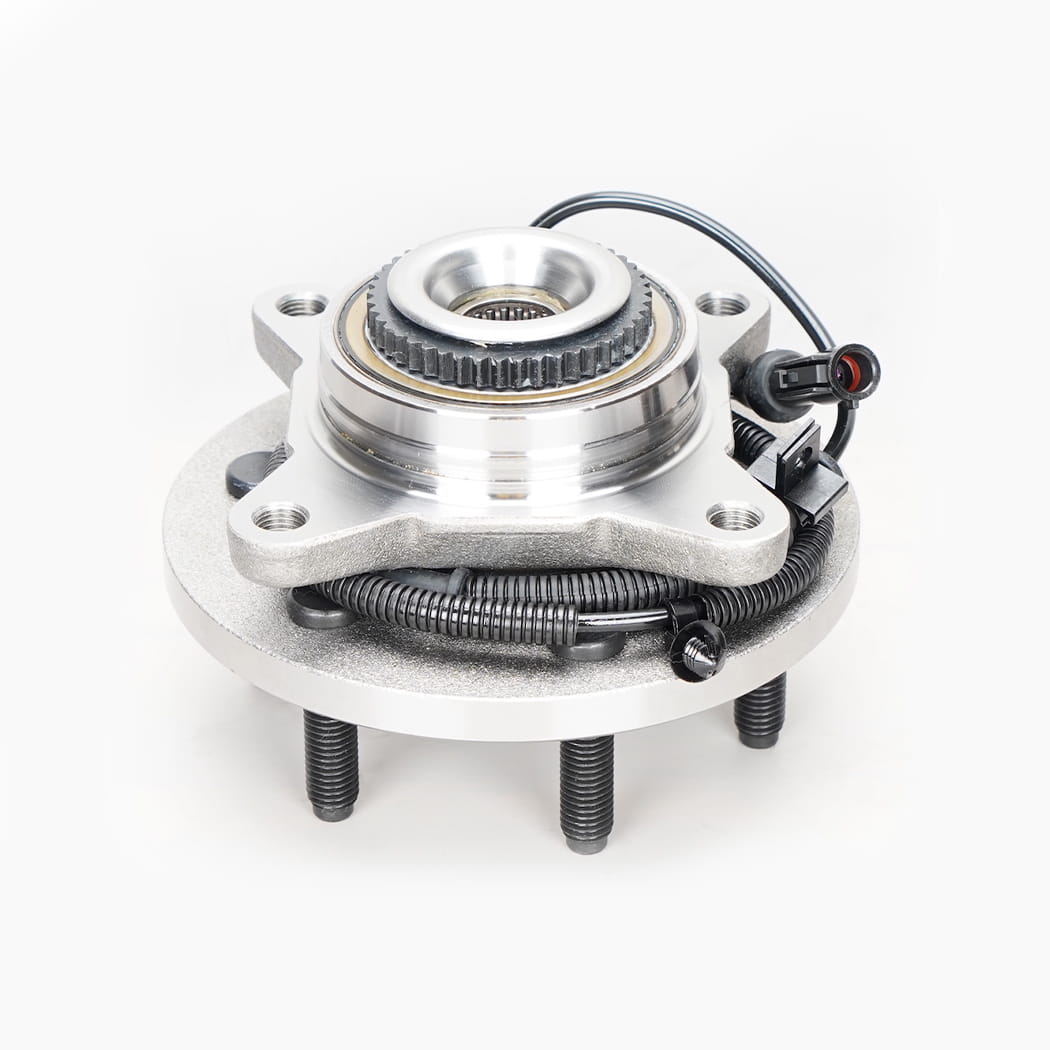1. Signs of Wheel Bearing Assembly Issues
Recognizing early signs of wheel bearing failure can help prevent more severe damage. Common indicators include:
Unusual Noises: A growling or grinding noise coming from the wheel area often suggests that the bearings are damaged or worn out. This noise may become more pronounced when turning or driving at higher speeds.
Vibration: If you notice increased vibration in the steering wheel or vehicle body, it could indicate an issue with the wheel bearing assembly. This often occurs when the bearings become loose or excessively worn.
Uneven Tire Wear: Damaged bearings can cause uneven tire wear, particularly on the inside or outside edges of the tire, because the wheel may not rotate properly or may have excess play.
Wheel Play: If there is noticeable play or wobbling in the wheel when you manually move it back and forth, it could indicate a worn bearing assembly.
2. Regular Inspection and Lubrication
Preventive maintenance plays a significant role in extending the life of wheel bearing assemblies. Regular inspections are necessary to detect any potential issues before they become major problems.
Visual Inspection: Inspect the bearing assembly for visible signs of wear, rust, or damage. Any cracks or missing parts may indicate that the bearing has been compromised and needs to be replaced.
Lubrication Checks: Over time, the lubricant in the bearing can break down or leak out, reducing the bearing’s ability to operate efficiently. Checking and replacing the lubrication periodically is crucial to maintaining smooth operation and preventing overheating.

3. Replacing a Wheel Bearing Assembly
When a wheel bearing assembly has worn out beyond repair, replacement is necessary. The process of replacing the bearing involves removing the wheel, brake components, and the old bearing assembly. The new bearing is then installed with a press or specialized tool to ensure it is seated properly.
It is essential to install the bearing assembly correctly to avoid further damage to the wheel hub or axle. If the assembly is improperly aligned, it can lead to premature failure of the new bearing. Some vehicles may require the replacement of the entire wheel hub assembly, as the bearing is often pressed into the hub. In these cases, it’s important to follow the manufacturer’s guidelines for the replacement procedure.
4. Troubleshooting Common Bearing Assembly Issues
If you’re experiencing issues with your wheel bearing assembly, troubleshooting may involve several steps:
Examine the Seals: Check the seals for wear or damage. If they are cracked or broken, moisture and dirt can enter the bearing, leading to premature failure.
Inspect the Bearing for Contamination: Over time, dirt and debris can contaminate the grease inside the bearing, causing it to lose lubrication properties. If the grease appears dirty or discolored, it may need to be replaced.
Check for Overheating: Excessive heat can cause the bearing to fail. Ensure that the bearing isn’t exposed to extreme conditions, such as heavy loads or inadequate lubrication, which can cause it to overheat and wear out quickly.